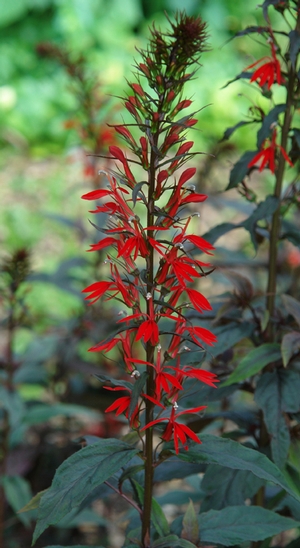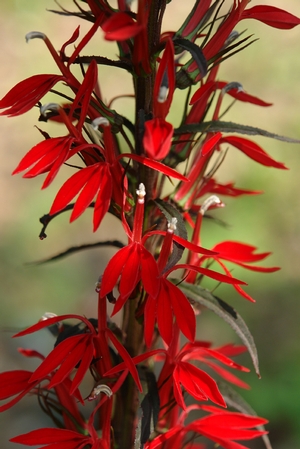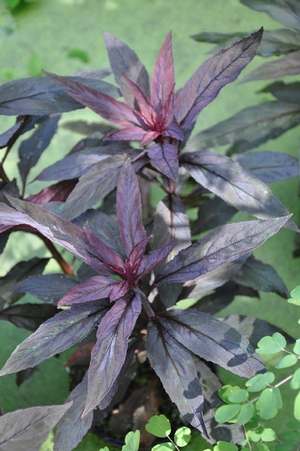
Lobelia cardinalis 'Black Truffle' PP25687
cardinal flower
Wonderful in the perennial border and perfect for rain gardens, this cardinal flower is sure to stand out with its dramatic, dark chocolatey-purple foliage and bold red flowers. Superior to other dark-foliaged Lobelias on the market, 'Black Truffle' holds this deep color throughout the growing season. A magnet for hummingbirds and butterflies all summer, but deer tend to leave it alone. Introduced by Peter Heus and brought to market by Plants Nouveau.
| SIZE | |
|---|---|
| Lobelia 'Black Truffle' PPAF - 50 per flat | Availability |
| Additional royalty fee per flat | Login for Pricing |
| Total price per flat | Login for Pricing |
Height3-4 Feet |
Spread2-3 Feet |
Spacing12-18 Inches |
Bloom ColorRed |
USDA Hardiness Zone 3-8 |
cardinal flower Interesting Notes
Never, has a true, native cardinal flower been available with such deep, dark foliage and bright red flowers. The combination is stunning! We are happy to be working with native plantsman, extraordinaire, Peter Heus from West Virginia on this exciting new introduction. Black Truffle was selected for its nearly black foliage and bushy, upright habit. It’s a hummingbird magnet and so much more. If you’ve ever dreamed of a perennial coleus – this plant is your dream come true.
The foliage emerges nearly black with an oil-slick looking sheen to it. As the summer months go on and the heat turns up, the foliage turns shiny maroon and stays that way until the cardinal red flowers appear. The foliage lasts from May to a hard frost and will give you months of enjoyment as the hummingbirds and butterflies frequent it often. - Plants Nouveau
Found throughout the Americas, cardinal flower occurs and in other locations with rich soil that is acidic to neutral and in filtered shade to full sun. While not a true perennial, Lobelia cardinalis propagates itself by offsets from axils at the basal foliage which form their own roots. When placed in a suitable site, cardinal flower will happily self-sow from seed.
Lobelia cardinalis 'Black Truffle' Growing and Maintenance Tips
Cardinal flower performs best with consistent moisture – in areas where drier conditions may occur, mulching is encouraged. It is a lovely plant to be used en masse in a border or in a wildlife, hummingbird, butterfly or water garden. This plant supports ruby-throated hummingbirds, swallowtail butterflies, and bumblebees that are able to pierce the corollas for nectar.
Key Characteristics & Attributes









Additional Information
|
Soil Moisture Needs
|
Green Infrastructure
|
Wetland Indicator Status
|
Plug Type
|
||||||||||||
|
For Animals
|
Attributes
|
Propagation Type
|












